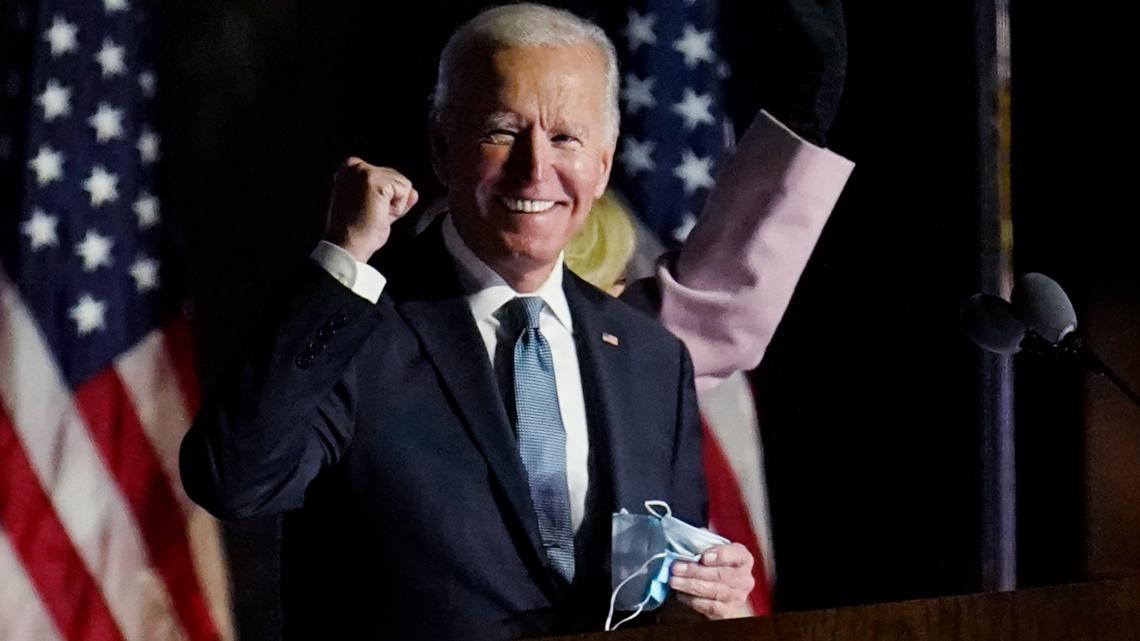While the 2024 election may feel like it has taken a lifetime, just four years ago another presidential election was marked by a number of world-changing events.
WASHINGTON — The presidential election in 2024 has condensed a number of monumental political events into a few months, from the disastrous June debate by President Joe Biden to the two assassination attempts against former president Donald Trump to the eventual replacement of Biden at the top of the ticket by Vice President Kamala Harris.
But it’s not the first time in recent memory the final months before a presidential election have been stuffed full of major news events. In 2020, when Biden faced Trump for the presidency, the U.S. faced major challenges in COVID-19, racial justice protests and the impeachment trial of a sitting president.
Here’s a refresher on some of the major events that shaped the 2020 election:
Jan. 16 – The first impeachment trial of then-President Donald Trump begins in the U.S. Senate. Trump was accused of trying to influence the election by pressuring Ukrainian President Volodymyr Zelensky to open an investigation into Biden’s son Hunter. The House impeached Trump in December 2019. He was eventually acquitted by the Senate on Feb. 5.
Jan. 20 – The CDC confirms the first case of human-to-human transmission of COVID-19 in the U.S. Within two months, the disease would grow into a worldwide pandemic that would shape life over the next few years.
Feb. 4 – Trump delivers a highly partisan State of the Union address to Congress, and in a show of the deep divide between the parties that grew during Trump’s presidency, Speaker of the House Nancy Pelosi ended the night by ripping up his speech on the House floor.
Feb. 11 – The World Health Organization officially names the novel coronavirus, giving it the infamous name that the world knows it by: COVID-19.
Feb. 22 – Joe Biden wins the South Carolina primary. Spurred on by support from Black voters, Biden seemingly changed the trajectory of the Democratic primary overnight. Over the next several months, he would notch up wins in more primary states as several of his competitors dropped out and endorsed him.
March 11 – COVID-19 declared a global pandemic. In the U.S., some states began implementing protective measures including mask mandates and encouraging work-from-home policies. The response to the pandemic became a culture wars flashpoint in the U.S., with many conservatives rallying against the measures.
May 25 – A Black man named George Floyd was murdered by Minneapolis police, kicking off months of protests across the U.S. and around the world against police brutality, racism and violence against Black people. The protests were complicated by the looming threat of COVID-19, and deepened racial and political divides in the U.S.
June 1 – As protests against the death of George Floyd swept through Washington, D.C., law enforcement officers, at the request of the Trump administration, used tear gas and other riot control devices to forcefully clear peaceful protesters from Lafayette Square to make a path for Trump and senior administration officials to walk from the White House to St. John’s Episcopal Church for a photo op.
June 20 – Trump holds his first in-person rally since March in Tulsa, Oklahoma. Originally planned for June 19 — a holiday celebrated by many Black Americans as the day slavery ended in the U.S. — the event and it’s originally planned date were criticized for being insensitive amidst the George Floyd protests, as Tulsa was the site of an early 20th century massacre of Black people.
Aug. 20 – Joe Biden accepts his party’s nomination as their presidential candidate on the last day of the National Democratic Convention in Milwaukee, Wisconsin. Much of the event was held virtually to prevent the spread of COVID-19.
Sept. 18 – Supreme Court Justice Ruth Bader Ginsburg, one of the court’s four liberal justices, dies from pancreatic cancer at the age of 87. Ginsburg’s death months before a presidential election mirrored the 2016 death of Justice Antonin Scalia, and the resulting controversy over Republicans blocking then-President Barrack Obama’s nomination of Merrick Garland to replace him.
Sept. 29 – The first presidential debate between Trump and Biden put the spotlight on Trump’s temperament, as he spent much of the debate claiming falsehoods and attacking Biden. When asked if he would commit to a peaceful transition of power by moderator Chris Wallace, Trump said, “we’ll have to wait and see.”
Oct. 2 – Trump is airlifted to Walter Reed Medical Center after being diagnosed with COVID-19. After three days, he was released. Trump refused to attend the second presidential debate, on Oct. 15, remotely while quarantined and the debate was subsequently canceled.
Oct. 8 – The FBI announces the arrests of 13 men suspected of orchestrating a plan to kidnap Michigan Governor Gretchen Whitmer, in an apparent attempt to destabilize the state’s government. The incident highlighted the growing trend of political violence in America.
Oct. 26 – Justice Amy Coney Barrett is confirmed to the Supreme Court to replace Ruth Bader Ginsburg, swinging the court to a 6-3 conservative majority. The confirmation was marred by controversy and accusations that Senate President Mitch McConnell was acting hypocritically by confirming her days before an election after refusing to even hold a hearing for Obama’s nominee that was announced in March 2016.
Nov. 3 – Joe Biden wins the presidential election, becoming the 46th President of the United States. Trump refuses to concede, falsely claiming that the election was “rigged” and that Biden hadn’t actually beaten him.
What was the Electoral College vote in 2020?
Biden won the 2020 election with 306 Electoral College votes to Trump’s 232 votes.
Which states did Biden win in 2020?
Arizona – 11 electoral votes
California – 55 electoral votes
Colorado – 9 electoral votes
Connecticut – 7 electoral votes
Delaware – 3 electoral votes
District of Columbia – 3 electoral votes
Georgia – 16 electoral votes
Hawaii – 4 electoral votes
Illinois – 20 electoral votes
Maine – 4 electoral votes — Joe Biden won one electoral vote from the state’s 1st Congressional District and two votes from the statewide count. The 2nd Congressional District vote went to Donald Trump.
Maryland – 10 electoral votes
Massachusetts – 11 electoral votes
Michigan – 16 electoral votes
Minnesota – 10 electoral votes
Nevada – 6 electoral votes
New Hampshire – 4 electoral votes
New Jersey – 14 electoral votes
New Mexico – 5 electoral votes
New York – 29 electoral votes
Oregon – 7 electoral votes
Pennsylvania – 20 electoral votes
Rhode Island – 4 electoral votes
Vermont – 3 electoral votes
Virginia – 13 electoral votes
Washington – 12 electoral votes
Wisconsin – 10 electoral votes
Which states did Trump win in 2020?
Alabama – 9 electoral votes
Alaska – 3 electoral votes
Arkansas – 6 electoral votes
Florida – 29 electoral votes
Idaho – 4 electoral votes
Indiana – 11 electoral votes
Iowa – 6 electoral votes
Kansas – 6 electoral votes
Kentucky – 8 electoral votes
Louisiana – 8 electoral votes
Mississippi – 6 electoral votes
Missouri – 10 electoral votes
Montana – 3 electoral votes
Nebraska – 5 electoral votes — Donald Trump won four electoral votes and Joe Biden has won one.
North Carolina – 15 electoral votes
North Dakota – 3 electoral votes
Ohio – 18 electoral votes
Oklahoma – 7 electoral votes
South Carolina – 9 electoral votes
South Dakota – 3 electoral votes
Tennessee – 11 electoral votes
Texas – 38 electoral votes
Utah – 6 electoral votes
West Virginia – 5 electoral votes
Wyoming – 3 electoral votes














